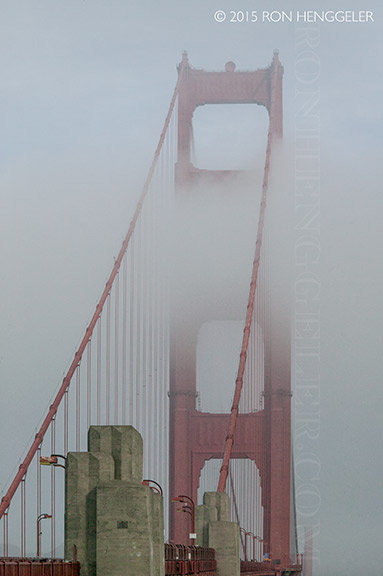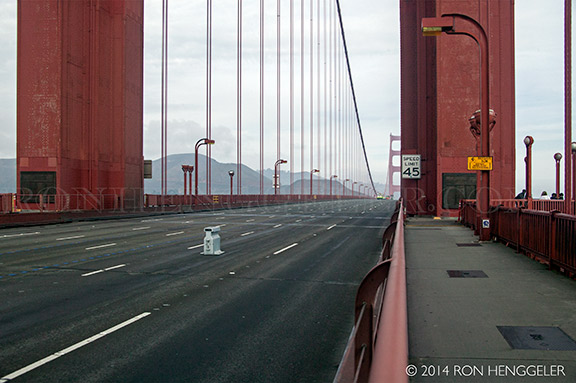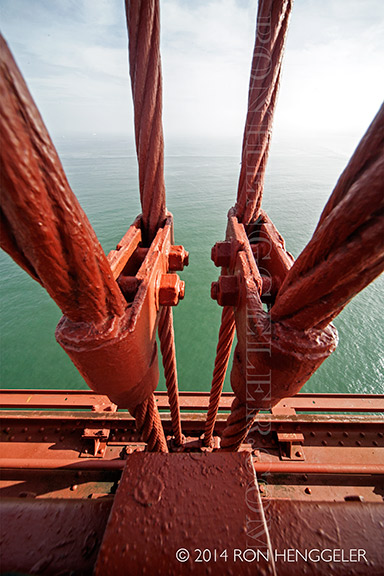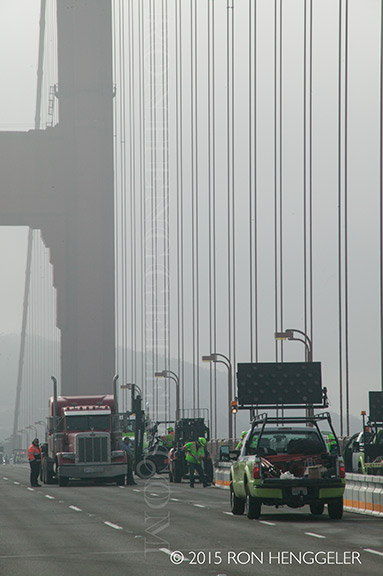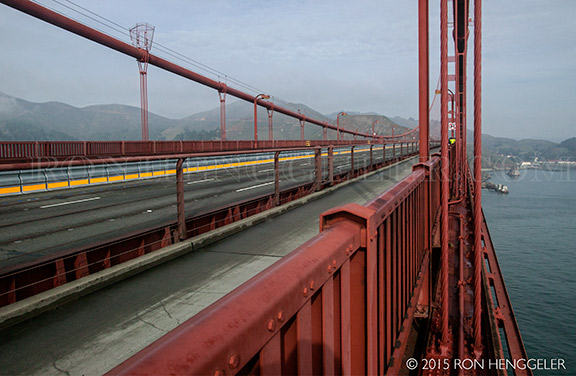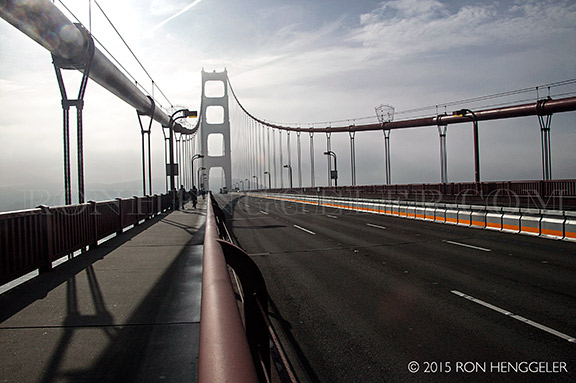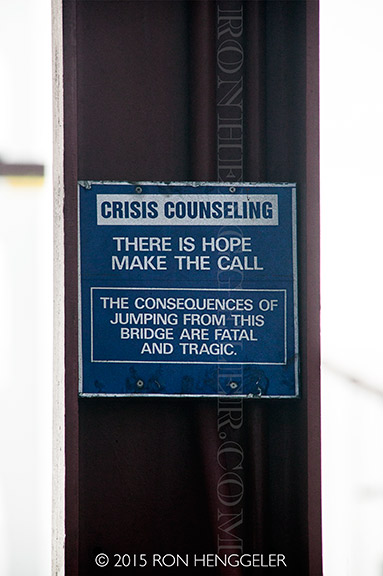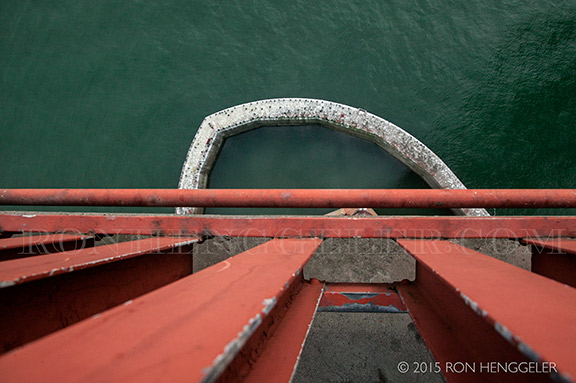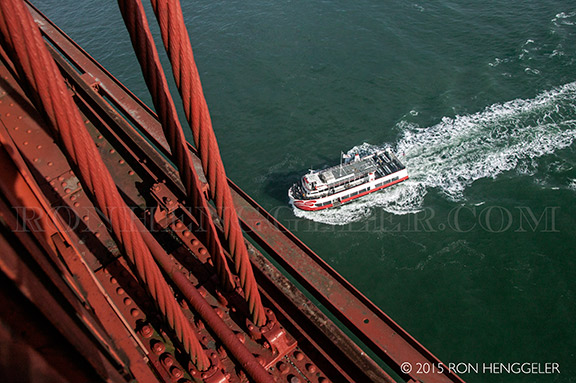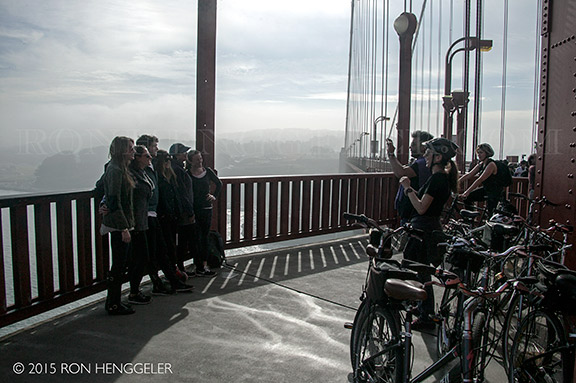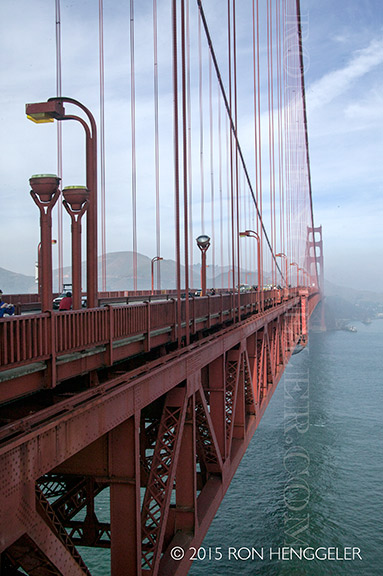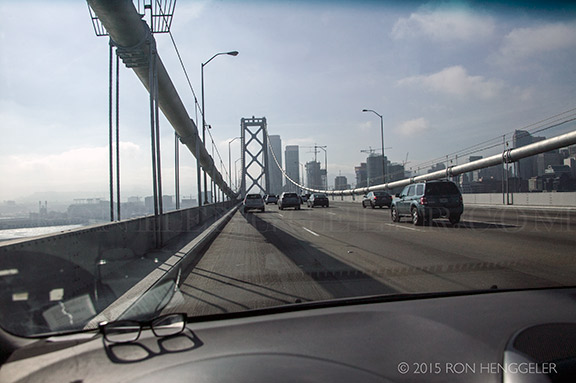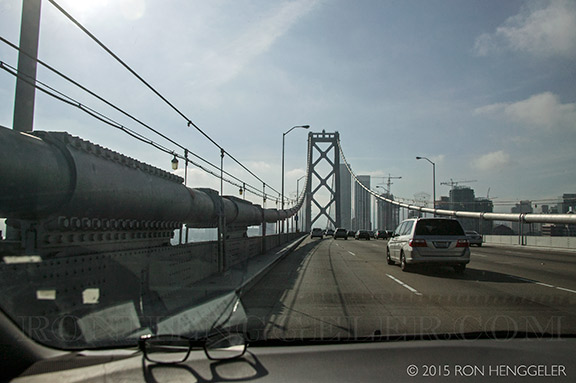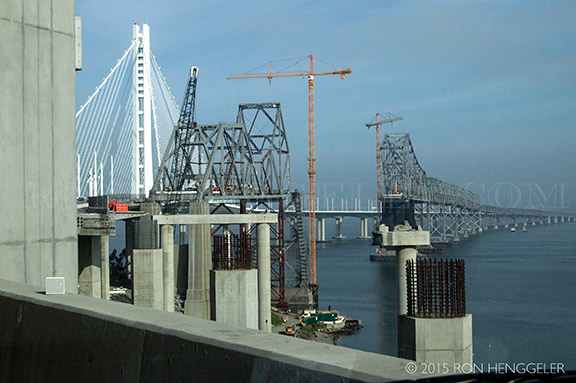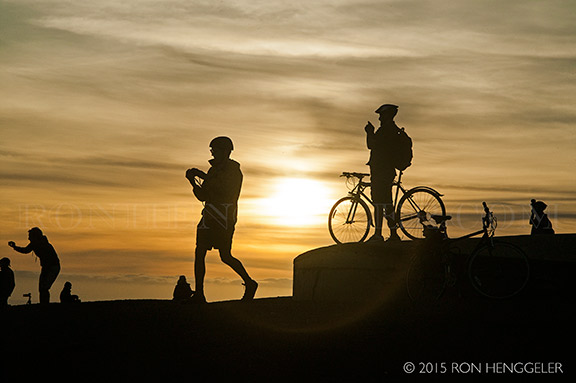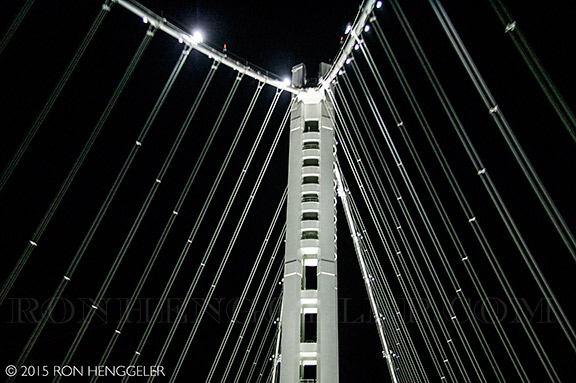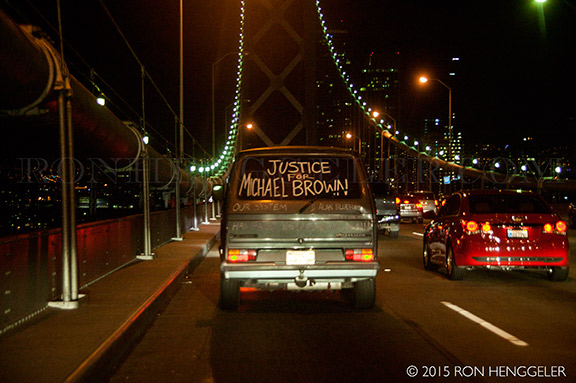RON HENGGELER |
January 7, 2015
Historic weekend closure of the Golden Gate Bridge
For the first time in its 77 year long history, San Francisco’s most iconic landmark, and the most photographed bridge in the world, went on a weekend hiatus.
The Golden Gate Bridge was closed to traffic at one minute after midnight on Saturday, January 10th, 2015. Immediately after closing, crews began to install a movable median barrier designed to prevent head-on collisions.
Dusk on Ocean Beach January 6, 2015 |
Sunset on Ocean Beach January 6, 2015 |
On Saturday morning I went to photograph the bridge and the roadwork. |
The staging area in San Francisco’s Presidio for loading and transporting the 3,500 separate pieces of the barrier. |
The bridge and the morning’s fog slowly beginning to burn off |
The south tower and morning fog |
Morning stillness, lifting fog, and no traffic |
The $30 million barrier will replace the yellow plastic pylons that bridge workers used to place in the middle of the bridge by hand to separate traffic flowing in opposite directions. |
Looking through the south tower to the north tower |
Looking up to the south tower. |
A detail of the south tower’s archway. |
A detail of the cables connecting to the roadway |
The steel doorway on the side of the south tower that opens up to the tower’s elevator |
|
|
No traffic, a historic weekend |
On Saturday morning, the highly choreographed work construction was humming along on schedule. |
The individual pieces of the barrier are connected with large steel pins. |
Installing the zipper on the north side of the south tower. |
Looking to the north tower with the zipper already in place. |
|
The barrier will be 1.7-miles-long . It will cross the length of the Bridge and on the approach portion of Highway 101, north of the Golden Gate Bridge, starting at Alexander Avenue. Using transfer machines, the barrier will be moved several times a day to create more lanes in a particular direction to accommodate variable traffic demands such as the morning and evening commutes. |
A shot of the bridge with the new zipper barrier taken from near the center of the bridge. |
A sign on the bridge’s lamp post |
Looking down to the foot of the south tower that rises out of a coffer-dam built in the 1930’s. |
In May 1987, as part of the 50th anniversary celebration, the Golden Gate Bridge district closed the bridge for a day to automobile traffic and allowed pedestrians to cross the bridge. However, this celebration attracted 750,000 to 1,000,000 people, and ineffective crowd control meant the bridge became congested with roughly 300,000 people, causing the center span of the bridge to flatten out under the weight. |
The Golden Gate Bridge is one of the most internationally recognized symbols of San Francisco, California, and the United States. |
|
A gateway to heaven? |
The bridge was originally painted with red lead primer and a lead-based topcoat, which was touched up as required. In the mid-1960s, a program was started to improve corrosion protection by stripping the original paint and repainting the bridge with zinc silicate primer and vinyl topcoats. Since 1990 acrylic topcoats have been used instead for air-quality reasons. The program was completed in 1995 and it is now maintained by 38 painters who touch up the paintwork where it becomes seriously corroded. |
French tourists and photo-taking on the bridge |
|
From 1971 to 2015, opposing traffic was separated by small, plastic pylons, and during that time, there were 16 fatalities resulting from 128 head-on collisions. To improve safety, the speed limit on the Golden Gate Bridge was reduced from 55 to 45 mph on October 1, 1983. Although there had been discussion concerning the installation of a movable barrier since the 1980s, only in March 2005 did the Bridge Board of Directors commit to finding funding to complete the $2 million study required prior to the installation of a movable median barrier. The installation of a movable median barrier was completed on January 11, 2015, following a closure of 45.5 hours to private vehicle traffic, the longest in the bridge's history. The new barrier system cost approximately $30 million to purchase and install. |
As the barrier work crews from opposite sides began approaching each other, camera crews began preparing to document the moment. |
On Sunday morning, Dave and I went into the Marin Headlands on the north side of the Golden Gate Bridge to photograph the traffic-less bridge from the coastal ridge on the north side. Because the Golden Gate Bridge was closed, we drove over the Bay Bridge to Richmond, crossed the Richmond-San Raphael Bridge, and then approached the Marin Headlands from Sausalito on the north side of the Golden Gate. |
|
On the round-about way to the Marin Headlands, I stopped on Yerba Buena Island to photograph the new Bay Bridge and current de-construction of the old cantilevered Bay Bridge. |
From the top of Yerba Buena Island, a view of the new Bay Bridge and current de-construction of the old cantilevered Bay Bridge |
The glimpsed view of the new Bay Bridge and current de-construction of the old cantilevered Bay Bridge |
Crossing the Richmond-San Raphael Bridge on the way to the Marin Headlands to photograph the Golden Gate Bridge |
A view of San Francisco from Sausalito |
A view of Alcatraz from Sausalito |
Point Binita seen from Battery Spencer |
On late Sunday afternoon, a test run of the Zipper-Truck. |
The Golden Gate seen from Battery Spencer in the Marin Headlands |
Photo was taken from Battery Spencer in the Marin Headlands. |
Pelicans glide near the south tower |
Photographers at Battery Spencer in the Marin Headlands |
Returning to San Francisco on Sunday night, a photo of the new Bay Bridge tower |
Detail of the new Bay Bridge tower |
On the Bay Bridge coming back into San Francisco after spending the day in the Marin Headlands |
Newsletters Index: 2015, 2014, 2013, 2012, 2011, 2010, 2009, 2008, 2007, 2006
Photography Index | Graphics Index | History Index
Home | Gallery | About Me | Links | Contact
© 2015 All rights reserved
The images are not in the public domain. They are the sole property of the
artist and may not be reproduced on the Internet, sold, altered, enhanced,
modified by artificial, digital or computer imaging or in any other form
without the express written permission of the artist. Non-watermarked copies of photographs on this site can be purchased by contacting Ron.





